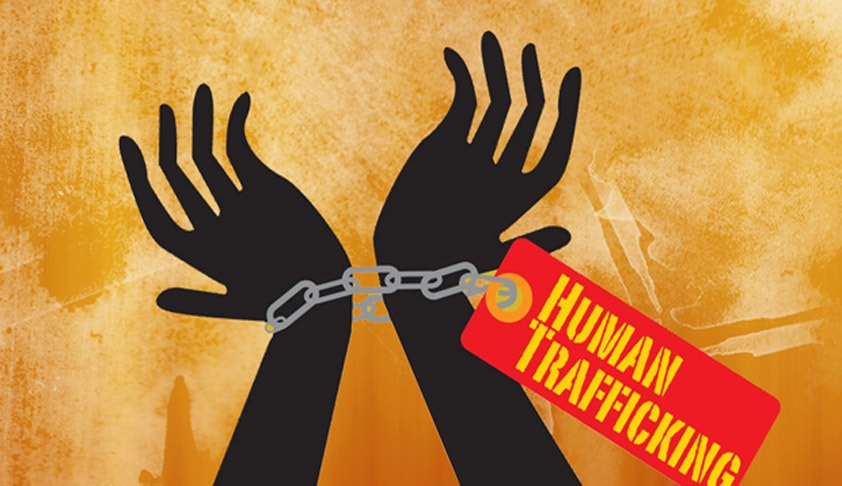"Facing the Reality: Human Trafficking in India."

"Facing the Reality: Human Trafficking in India."
Human Trafficking In India Introduction: Human trafficking is a grave violation of human rights and dignity, casting its dark shadow across the globe. India, with its vast population and complex socio-economic landscape, stands as one of the prominent hubs for this modern-day slavery. Despite legislative measures and efforts by both government and non-governmental organizations, human trafficking remains a persistent issue, affecting millions of lives. In this comprehensive exploration, we delve into the multifaceted dimensions of human trafficking in India, examining its root causes, manifestations, impact, and the ongoing battle against it. 1. Understanding Human Trafficking: a. Definition and Forms: - Human trafficking encompasses various forms such as sexual exploitation, forced labor, organ trafficking, forced marriages, and child trafficking. - It involves the recruitment, transportation, transfer, harboring, or receipt of persons through force, fraud, or coercion. b. Vulnerable Populations: - Poverty, lack of education, gender inequality, social discrimination, and regional conflicts contribute to vulnerability. - Women, children, LGBTQ+ individuals, migrants, and marginalized communities are particularly at risk. 2. Root Causes: a. Socio-Economic Factors: - Poverty and lack of economic opportunities push individuals into vulnerable situations. - Disparities in wealth distribution exacerbate vulnerabilities, especially in rural areas. b. Cultural Practices: - Deep-rooted cultural norms and practices perpetuate trafficking, such as the caste system, dowry system, and devadasi tradition. - Gender-based violence and discrimination contribute to the exploitation of women and children. c. Legal and Regulatory Challenges: - Gaps in legislation, weak enforcement, and corruption facilitate trafficking networks. - Inadequate victim protection mechanisms and witness intimidation hinder prosecution efforts. 3. Manifestations of Human Trafficking: a. Sexual Exploitation: - Women and children are trafficked for commercial sexual exploitation, including prostitution, pornography, and sex tourism. - Red-light districts in urban areas serve as hotspots for exploitation. b. Forced Labor: - Men, women, and children are subjected to forced labor in industries such as agriculture, construction, domestic work, and manufacturing. - Debt bondage and coercion are common tactics used by traffickers. c. Child Trafficking: - Children are trafficked for various purposes, including forced labor, sexual exploitation, child marriage, and adoption. - Trafficking for child labor is prevalent in sectors like brick kilns, garment factories, and domestic work. d. Organ Trafficking: - Organized criminal networks engage in trafficking organs for transplantation, exploiting poverty and desperation. - Donors, often from vulnerable communities, are coerced or deceived into selling their organs. 4. Impact on Victims: a. Physical and Psychological Trauma: - Victims suffer from physical injuries, sexual abuse, malnutrition, and exposure to hazardous working conditions. - Psychological trauma includes anxiety, depression, post-traumatic stress disorder (PTSD), and suicidal tendencies. b. Socio-Economic Consequences: - Trafficking survivors face stigmatization, social ostracization, and limited reintegration opportunities. - Loss of education, skills, and economic independence perpetuate cycles of poverty and exploitation. c. Health Risks: - Victims are at risk of sexually transmitted infections (STIs), HIV/AIDS, reproductive health issues, substance abuse, and malnutrition. - Lack of access to healthcare exacerbates their vulnerability. 5. Government and NGO Responses: a. Legislative Framework: - India has enacted various laws and amendments to combat trafficking, including the Immoral Traffic (Prevention) Act, Bonded Labor System (Abolition) Act, and Juvenile Justice (Care and Protection of Children) Act. - The Criminal Law (Amendment) Act, 2013 introduced stringent provisions for trafficking offenses. b. Law Enforcement and Prosecution: - Specialized anti-trafficking units, task forces, and rescue operations are conducted by law enforcement agencies. - Enhanced coordination between police, judiciary, and other stakeholders is crucial for effective prosecution. c. Victim Rehabilitation and Support: - Shelter homes, counseling services, vocational training, and education programs are provided for trafficking survivors. - NGOs play a vital role in providing holistic support, legal aid, and advocacy for victims' rights. d. Prevention and Awareness: - Community-based interventions, awareness campaigns, and educational initiatives aim to prevent trafficking and empower vulnerable populations. - Collaboration with media, schools, and local leaders is essential for disseminating information and combating stigma. 6. Challenges and Future Directions: a. Coordination and Collaboration: - Fragmentation among stakeholders hampers coordinated efforts against trafficking. - Multi-sectoral collaboration involving government agencies, NGOs, law enforcement, judiciary, and civil society is imperative. b. Addressing Root Causes: - Tackling poverty, improving access to education, healthcare, and livelihood opportunities are essential for addressing underlying vulnerabilities. - Empowering women, marginalized communities, and at-risk populations through social and economic empowerment initiatives. c. Strengthening Legal Framework: - Enhancing legislation, enforcement mechanisms, victim protection, and witness protection are critical for combating trafficking effectively. - Ratification and implementation of international conventions and protocols on trafficking. d. Research and Data Collection: - Comprehensive data collection, research studies, and impact assessments are needed to understand the scope, trends, and dynamics of trafficking. - Evidence-based policymaking and targeted interventions based on empirical data. Conclusion: Human trafficking is a complex and multifaceted phenomenon that continues to plague India, robbing millions of their freedom and dignity. Addressing this grave human rights violation requires a concerted effort involving legislative measures, law enforcement, victim support services, prevention strategies, and community engagement. By addressing root causes, strengthening legal frameworks, and fostering collaboration, India can make significant strides towards combating human trafficking and ensuring justice for its victims. It is only through collective action and unwavering commitment that we can dismantle the networks of exploitation and create a society where every individual can live with dignity and freedom.